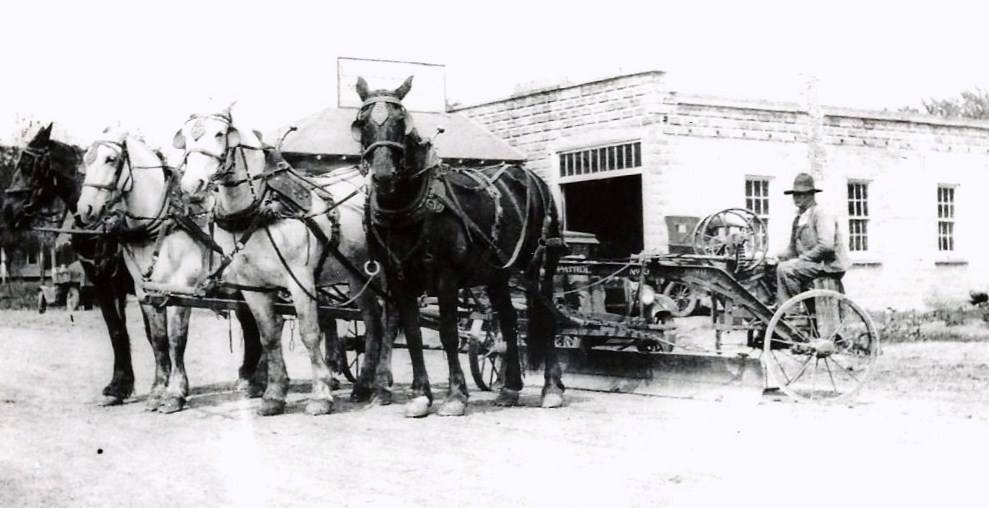My paternal grandfather, James Peter “Jim Pete” Clark spent most of his life on farms in Wabaunsee County, Kansas. He was born March 15, 1883 in the Snokomo Community south of Paxico, and died in his sleep on December 26, 1949 in the Maple Hill Central Office, Maple Hill, Kansas. His wife Mabel Rachel (Jones) Clark was the Central Office Chief Operator from 1914 until 1958.
Grandfather Clark loved horses and was known throughout the countryside as a good horse trader. He would go to farms and farm auctions and look for good horses that he could buy reasonably and re-sell to farmers and others for a profit. He also was known as someone who could break horses to ride fairly easily.
He used what was called “The Indian Method.” He would take a horse to Mill Creek, put a halter on the horse and he would lead the horse into the water, get on its back, and then swim the horse until it was so tired it could barely keep from drowning. Then he would walk the exhausted horse out of the water and remain on its back, riding it gently until the horse offered no trouble. Usually, there was no bucking or trouble, the horse was just too tired. If necessary, he would repeat the process until the horse offered no resistance. All that was left to do was to get the horse used to a saddle blanket and saddle.
Grandfather Clark also maintained a section of what was then known as Old Number 10. This is today known as Warren Road, and is the section of gravel road that goes west out of Maple Hill to the Vera Corner. At that point, the gravel road turns south and heads toward Vera and I-70. However, it is is possible to go straight west over what are today dirt roads that service little more than pastures. This road is designated “Mastadon Road” on the map today. This dirt road then connects with another gravel road (Bluebird Road) which eventually terminates in Paxico. Grandfather Clark maintained the portion of road from Maple Hill straight west all the way to Bluebird Road. It was a little more than five miles.
Thiis photograph was taken on Maple Hill’s Main Street during the 1920s. I don’t have an exact date. Grandfather Clark had a four-horse hitch that pulled the maintainer over the dirt roads. They had not yet been graveled. John Turnbull’s stone blacksmith shop is shown behind the horses.
Not shown in the photograph, is the Maple Hill Livery Barn, which was owned by my Grandfather Clark and his cousin Lee Wilson. I don’t know exactly how many years they owned the livery stable, but that is where these horses and the maintainer were kept. They also met all of the trains with either freight wagons or buggies. They would deliver freight to merchants, individuals and ranchers in the area.
Jim Pete Clark continued to work with and trade horses all of his life. He and Grandmother Clark bought a small house and barn at 1st and Prairie Avenue where he kept milk cows. He would milk, seperate the whole milk into milk and cream and they delivered both to Maple Hill families. He also owned the little pasture which is now the east portion of the Maple Hill City Park. There he kept his milk cows and some horses. It was sold to Lyndon Mee after Grandfather’s death in 1949. I believe Lyndon’s sister, Wynona “Nonie” (Mee) Miller owned it when it became a part of the City Park.
